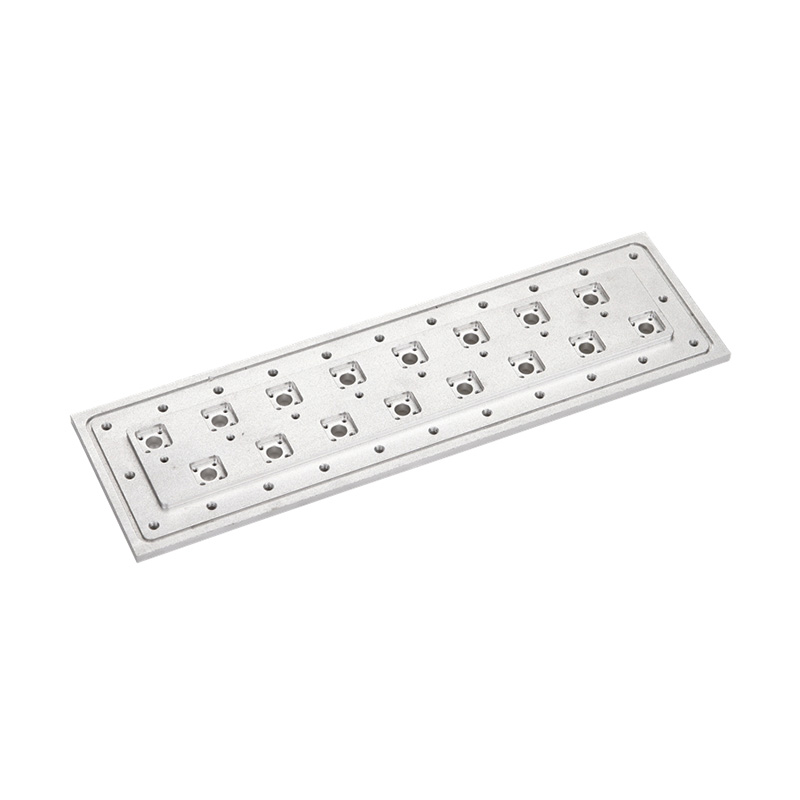What are the advantages of CNC shielding plates?
2025-07-11
In industrial numerical control equipment, the CNC shielding plate, as a key intermediate layer between the main control system and the actuating components, has become a core component ensuring the stable operation of the equipment due to its anti-interference, strong compatibility, and easy integration features. Its advantages are particularly prominent in medium and high-power scenarios.

Strong anti-interference ability, more stable operation
The CNC shielding plate, through its metal casing and grounding design, can effectively block electromagnetic interference (EMI) and radio frequency interference (RFI), keeping the pulse signal transmission error within 0.1%. In strong interference environments such as motors and frequency converters, CNC shielding plates can reduce the false operation rate by over 90%. For instance, when a 3-axis engraving machine operates at high speed (1000mm/min), the positioning accuracy of the system with CNC shielding plates is improved by 0.02mm/100mm compared to the unshielded solution.
Its internal circuit adopts optocoupler isolation technology, physically separating the strong current drive section from the weak current control section, preventing the reverse electromotive force of the motor from breaking down the main control chip. Under frequent start-stop conditions, the equipment failure rate can be reduced by 60%, and the mean time between failures (MTBF) can be extended to over 8,000 hours.
Wide compatibility, adaptable to multiple types of equipment
The standardized interfaces of the CNC shielding plate (such as the stepper motor drive interface, limit switch interface, and spindle control interface) are compatible with mainstream hardware and support 42/57/86 series stepper motors, servo motors, and various sensors. For instance, the same CNC shielding plate can be seamlessly connected to different types of drivers such as A4988,DRV8825, and TB6600, allowing for the replacement of accessories without modifying the circuit and reducing the cost of equipment upgrades.
For different control systems, the shielding board can be adapted to various firmware such as GRBL, Mach3, and Marlin. Users do not need to redevelop driver programs to connect main control boards like Arduino and STM32 to the numerical control system, significantly shortening the equipment development cycle and saving more than 30% of the debugging time compared to custom circuit solutions.
Integrated protection function to improve safety
The industrial-grade CNC shielding plate is equipped with overcurrent, overvoltage and overheat protection circuits. When the driver current exceeds 150% of the rated value or the temperature rises to 85℃, it will automatically cut off the output and sound an alarm to prevent the motor or main control board from burning out. In CNC equipment with hydraulic and pneumatic linkage, the emergency stop signal interface of the shielding board can be linked with the equipment's safety system, with a response time of ≤10ms, meeting industrial safety standards (such as ISO 13849).
Some high-end shielding boards also have a voltage monitoring function. When the input voltage fluctuates by more than ±10%, a soft shutdown protection will be triggered to prevent processing errors caused by unstable power supply. They are particularly suitable for production environments with large grid fluctuations.
Simplify wiring and debugging, reduce the difficulty of operation
The shielding board integrates the scattered control circuits in a centralized manner and enables rapid connection through a pin-type interface, reducing the wiring workload by 60% compared to scattered wiring. Moreover, the circuit routing is clear, and the efficiency of fault point location during later maintenance is increased by 50%. For instance, when assembling a 4-axis CNC machine tool, the wiring time for the solution with a CNC shielding plate can be reduced from 8 hours to 3 hours.
During the debugging stage, the indicator lights on the shielding board can directly display the power supply, signal and fault status, allowing for a preliminary determination of the problem without the need for an oscilloscope. Some products are equipped with online debugging interfaces, supporting parameter modification (such as subdivision Settings and enable logic) via a computer. Configuration can be completed without disassembling the equipment, reducing the technical requirements for operators.
Applicable scenarios and performance advantages
The numerical control CNC shielding plate has significant advantages in medium and high-power equipment (driving ≥57 stepper motors), multi-axis linkage systems (more than 3 axes), and industrial production environments. Data shows that the equipment utilization rate of production lines using CNC shielding plates has increased by 15%, and the annual maintenance cost has decreased by 25%. With the development of intelligent manufacturing, intelligent shielding boards with IoT functions (such as integrated temperature sensors and data upload modules) are becoming a trend, providing support for remote monitoring and predictive maintenance of equipment.

























